Welcome to our Colossus Movie Guide for Rosemary’s Baby. This guide contains our detailed library of content covering key aspects of the movie’s plot, ending, meaning, and more. We encourage your comments to help us create the best possible guide. Thank you!
What is Rosemary’s Baby about?
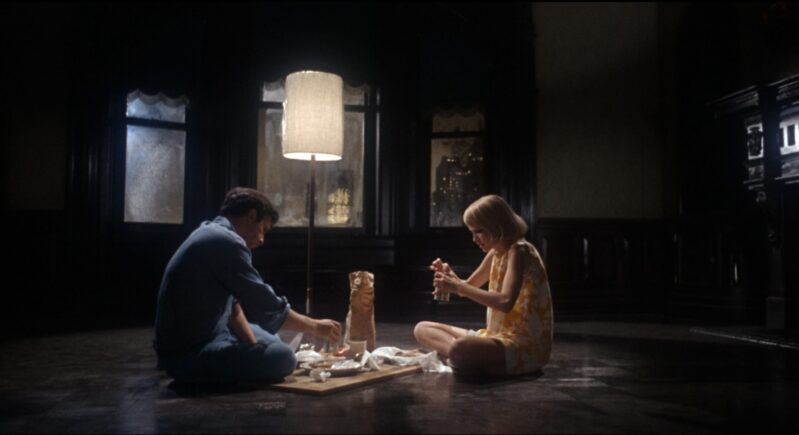
Rosemary’s Baby is all about finding power in the individual when there’s overwhelming pressure to become part of a larger collective. Specifically, the film focuses on Catholicism and the burden many feel to live a traditionally Catholic lifestyle. Rosemary is desperate to start a family, but is painfully aware that her vision of a family is at odds with her Catholic family’s. Instead of staying home and marrying a nice Catholic gentleman, she married an actor who whisked her away to sin-filled New York City. And unlike her sisters, who have each birthed multiple children, Rosemary has yet to even start the process. Thus, the movie symbolically displays the fear and anxiety that comes with going against tradition, against the collective.
As a result, many other topics are explored, such as the manipulation and control over women’s bodies, paranoia of dark forces and an unreliable reality, the isolation and vulnerability of pursuing a new path, and the complexity of trust in a world where you expect those closest to you to offer remorse and support. Rosemary’s journey to gain agency over her body, her family, her motherhood is exaggerated for the horror genre, yet very reminiscent of what it’s like to be a woman in a country ruled by religion.
Movie Guide table of contents
Cast
- Mia Farrow – Rosemary Woodhouse
- John Cassavetes – Guy Woodhouse
- Ruth Gordon – Minnie Castevet
- Sidney Blackmer – Steven Marcato / Roman Castevet
- Maurice Evans – Hutch
- Ralph Bellamy – Dr. Abraham Sapirstein
- Angela Dorian – Terry Gionoffrio
- Patsy Kelly – Laura-Louise McBirney
- Elisha Cook – Mr. Nicklas
- Emmaline Henry – Elise Dunstan
- Charles Grodin – Dr. Hill
- Roman Polanski – Writer and director
The ending of Rosemary’s Baby explained
A recap of Rosemary’s Baby‘s ending
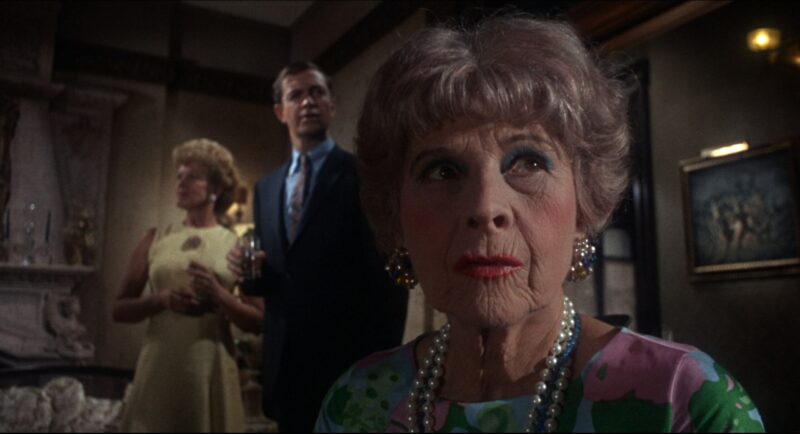
After Rosemary is carted away Dr. Hill’s office, she escapes once inside her Bramford apartment building and locks herself away from Guy and Dr. Sapirstein. But before long, the Castevets and their coven members sneak in through a secret entrance in Rosemary’s hallway closet. They sedate Rosemary and send her into a coma. She then goes into labor and gives birth.
When she awakes, she is told her baby boy was stillborn. As she lies in bed, she is given suspicious pills she begins to believe are further sedating her. Plus, she notices that her breastmilk is being saved rather than discarded. And the kicker: she believes she hears the sounds of a baby crying. All of which leads her to believe her baby is still alive. So she begins to hide her pills and waits for the proper moment to sneak away.
Eventually, she finds her way out of the apartment through the secret passage in her closet. She walks into a room to find Guy and the Castevets and their coven standing around a black crib where her demon baby rests. Wielding a knife, she walks over to the baby and looks down in horror. “He has his father’s eyes,” they say. Instead of shooing her away, Roman—who proclaims the baby, Adrian Marcato, is Satan’s son—encourages Rosemary to mother the child, promising her that she won’t have to join the coven to do so. Demoralized, Rosemary walks away from the baby and drops the knife.
As the coven continues to chat and celebrate the birth of the Antichrist, Rosemary sits, slowly losing the life in her body. Then, in a moment she she almost seems outside her own body, the baby’s crying startles Rosemary and causes her to stand. She walks over to the baby and tells a woman she’s rocking the baby too hard. Roman tells the woman to walk away and invites Rosemary to stand closer. “Are you trying to get me to be his mother?” Rosemary asks. To which Roman responds, “Aren’t you his mother?”
Rosemary then walks up to the crib and begins to rock it. The crowd slowly gathers around her as she stares down into the crib. Her face softens, a small smile appears. She reaches in and adjusts the baby’s blankets. A calm washes over her face as the camera pans away to the blinds and out into the city.
The meaning of Rosemary’s Baby‘s ending
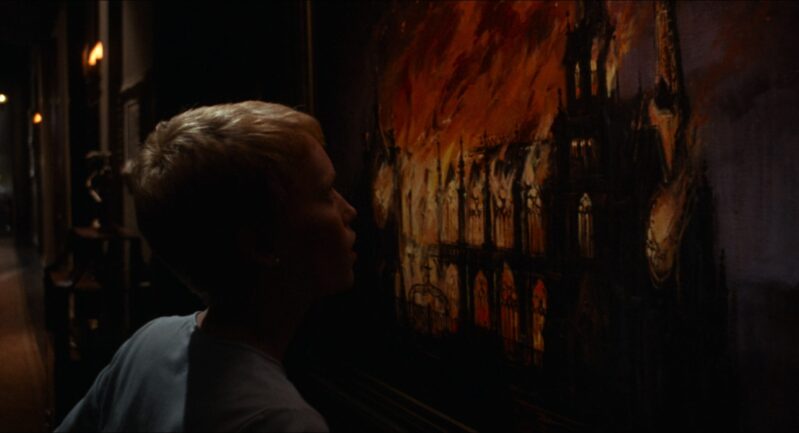
This is certainly an odd ending to Rosemary’s Baby, right? For an event as horrific as the birth of the Antichrist, the calming, soothing aura that washes over the screen in the final moments seems incongruous to Rosemary’s petrified state. Could she really care for such a monstrosity? Even if it is her own baby that she birthed? This question ultimately marks the power of the movie’s ending, as it is the culmination of the movie’s thematic explorations.
A huge part of Rosemary’s journey is the Catholic guilt that burdens her. The opening sequence of the movie is a floating, dreamlike shot of New York City. Soft music plays (the same music we’ll hear at the end of the movie) as pink, flowery text covers the screen for the opening credits. This aura perfectly captures the fragile, innocent Rosemary, who moved to the city with her aspiring actor husband Guy.
But there’s a sinister undertone to her choices, as its revealed that her family has shamed her for moving away and endorsing unmoral values. Unlike her sisters, Rosemary has failed to have children. And while she loves Guy and doesn’t appreciate the guilt imposed by her family, Rosemary does indeed want to have children, and feels pressure to have at least three children. And part of that desire likely stems from how she was raised. There’s an inherent pressure to start a family, to bring a child into the Catholic fold.
You can view the rest of the movie as Rosemary’s struggle to redefine what family means to her, to discover her own identity outside the Catholic pressure to live and think a certain way. Rosemary is an unassuming woman, believing in the goodness of people and interested in forming genuine connections with people. She excitedly pursues a friendship with Terry. She arranges to have dinner with the Castevets. And she makes love with Guy in the soft moonlight of their apartment complex. There’s such tenderness to Rosemary’s aura that she uses for good and camaraderie.
But before long, her softness is exploited. Her mind and body are manipulated for the use of others. Guy sacrifices his wife’s womb in order to get a lead role in an important play, and the Castevets’ coven arrange for the Devil to rape Rosemary to birth Antichrist. Then, they all take advantage of her submissive nature in order to micromanage Rosemary’s pregnancy and her healthy—she effectively loses all her agency (an important theme of the film). Her “body” is viewed as more of an opportunity than Rosemary’s possession, than Rosemary’s right to motherhood, than Rosemary’s desire to grow a family in her image.
In this light, you can see the pressure and disarray caused by religion: in order for there to be goodness and morality and righteousness, cruelty and immorality and blasphemy must lurk in every crevice. You can’t be saved if there isn’t an evil force waiting to suck you in, and the Castevets are positioned as the polar opposites of the Catholic faith. God needs an enemy, and the church of Satan is ready to fight.
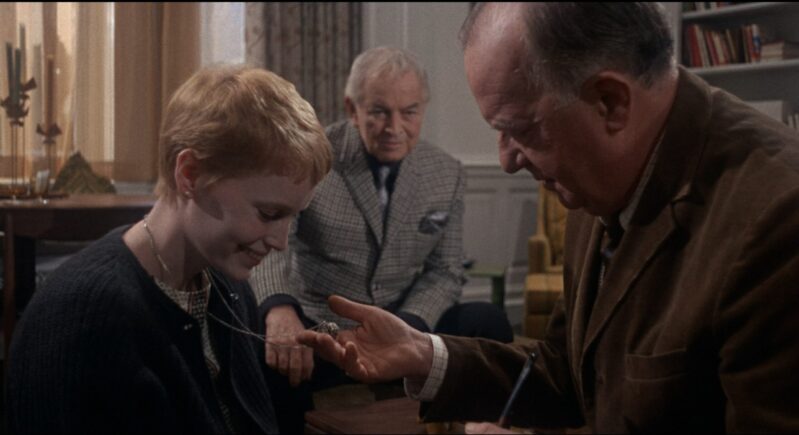
In order to fully understand just how relevant this battle between God and Satan was back when Rosemary’s Baby was released in 1968, look no further than Time’s iconic magazine cover from 1966. The words “Is God Dead?” were plastered across the cover in demonic red ink over a completely black background. The article became a seminal piece that captured a pivotal moment in religious and cultural discourse. The story delved into the existential and philosophical debates echoing through theological and secular spheres, exploring the tumultuous terrain navigated by modern theologians of the time.
The essence of the article focused on the challenges faced by contemporary theology in reconciling traditional religious beliefs with the seismic shifts in society, technology, and philosophical thought. Theologians were grappling with a world in rapid transformation, marked by scientific advancements, social upheavals, and a growing inclination towards secularism and atheism. In this dynamic landscape, the article showcased the efforts of theologians to redefine and reevaluate the concept of God, seeking a more nuanced understanding that resonated with the contemporary ethos.
The “death of God” was not presented merely as a literal demise but rather as a metaphor symbolizing the fading relevance and influence of traditional religious doctrines in explaining and guiding modern life. It reflected a crisis of relevance, highlighting the difficulties in maintaining a conventional approach to religion and God in an age marked by skepticism, scientific rationality, and existential questioning.
Essentially: the very idea of God was on the chopping block back in 1968. We no longer existed in a society where everybody blindly believed in the same God and followed a strict set of rules. There was a push to redefine life in a world outside of God, a world where the individual had the final say and not an overwhelming denomination. And that’s the position we find Rosemary—a woman who decided to forgo the traditional Catholic lifestyle and create a modern version of family. In a big city (as opposed to a small one) with her big-time husband (as opposed to a humble Catholic one), she is redefining what it means to be a Catholic in 1960s America.
But with that plight comes a backlash. She cannot escape the guilt she feels from her Catholic family. She only feels comfortable writing to her brother, who seems to be the only member of her family that doesn’t shame her. And beyond him, all she has is her friend Hutch—who eventually dies. She is alone in her pregnancy, especially with Guy committed so heavily to his role in a play. Thus, the denial of tradition comes at a gigantic cost.
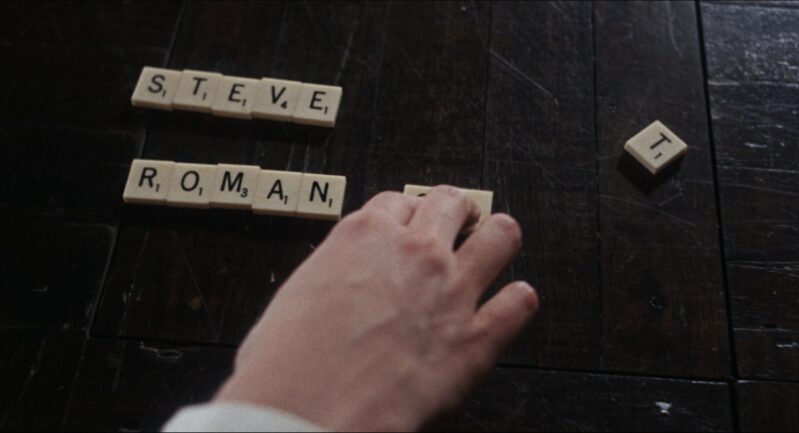
The only people that offer a semblance of solace? The Castevets, who live next door, who secretly indoctrinate her baby into the satanic fold. The Castevets’ coven becomes the ultimate symbol of denying Catholic tradition: Satan takes over. This isn’t done in a moralizing way by the film, but in a metaphorical way. Rosemary’s family has shunned Rosemary for her lifestyle and believe she might as well be in the hands of Satan—which is quite literally what happens. Her entire storyline with the satanic cult is nothing more than a defamiliarization of the fears imposed upon her by her inherited denomination. What better way to visualize her ever-crushing Catholic guilt?
Horror films are wonderful because they allow filmmakers to exaggerate our greatest fears, to force characters into the most diabolical and unthinkably evil scenarios and force them to react. The birth of the Antichrist is the ultimate symbol of Rosemary’s dishonor, a representation of the disgrace she feels as the result of her family’s contempt. She believes she’s made the right decision by moving to the city to start a family with Guy…but she knows traditional Catholics do not agree with her choice.
And that’s the fine line the movie navigates: the battle between who we’re pressured to be and who we’d like to become. Rosemary’s Baby explores how difficult it is to believe in the individual when there’s such staggering pressure to believe in a collective identity. Today it’s much easier and much more acceptable to believe in the individual. But back in 1968? It was blasphemy. And her Antichrist baby is what ultimately puts that ambition to the test.
This is what makes the ending so devastating, yet so powerful and cathartic. In that moment when Rosemary looks down at her baby, it seems like she’s lost. The Castevets were able to abuse Rosemary’s body and successfully birth the Antichrist. This baby does not look like the man she married, but instead the baby’s actual father: Satan. Yet…Rosemary has that same softness for her child. She tells the woman not to rock the crib so hard. She doesn’t want to stab the baby with her knife. In the end, she simply wants to sit with her child, to share a moment, to relish in his presence.
Like I said: the movie doesn’t end with a message or a moral. Instead, it simply observes that overwhelming pressure that anybody from a religious upbringing faces in a country where the individual has slowly gained more and more prominence. Does she hate this baby that represents her sinful lifestyle? Or does she ignore that larger battle between good and evil and raise the baby in her own image? The ending ultimately becomes a statement about life and how we choose to live it and raise our children within it.
That’s why the ending of the movie feels exactly like the beginning—because nothing has changed. Rosemary is still Rosemary. And despite birthing a monstrosity, she still wants to care for and raise a child. The world isn’t any different than it was before. The ceaseless battle between God and Satan waged long before her pregnancy and will continue long after. All that’s changed is her awareness of how charged that battle has become, how difficult it is to exist and grow and love within its rigid boundaries.
The themes and meaning of Rosemary’s Baby
Manipulation and control over women’s bodies
The movie’s most prominent theme is an issue that continues to persist to this day: Rosemary’s body is constantly manipulated by those around her, which takes away her autonomy and consent. This is especially evident in how others control her pregnancy and body. The people involved, particularly her husband and the Castevets, make plans and decisions about her body and her baby without her consent or knowledge.
From the beginning, it is clear that her body is seen as a means to an end by those with a sinister plan. Her pregnancy is not treated as a natural process but rather as a project that is managed and manipulated by external forces. Guy and their neighbors take a peculiar interest in her pregnancy, enforcing certain rules and restrictions, dictating what she should eat and the kind of medical attention she should receive. This level of control extends to the point where Rosemary is isolated from external opinions and influences that could empower her or give her control over her body. Dr. Abraham Sapirstein, who wasn’t her first choice for a doctor, dismisses her pains and concerns, leaving her feeling helpless and ignored.
Societal expectations and traditional norms regarding women’s roles in childbirth and motherhood, which all largely extend from the movie’s exploration of Catholic guilt, are utilized as tools of manipulation and control over Rosemary. The society depicted in the movie has clear expectations of women, framing them primarily in the roles of wives and mothers. Rosemary is expected to conform to the traditional role of a devoted wife and nurturing mother. From the outset, she is portrayed as naive and somewhat submissive, reflecting the societal ideal of femininity.
Psychological manipulation, particularly gaslighting, is a pivotal method used to control and subdue Rosemary, ensuring her compliance with the ominous plot woven around her. The term “gaslighting” refers to the manipulative tactic of making someone question their reality or memory, and it’s effectively employed by various characters in the film to destabilize Rosemary mentally and emotionally. Guy constantly dismisses her concerns, minimizes her pain, and contradicts her perceptions, making her uncertain about her own experiences and judgments. For instace, after the disturbing dream-like sequence during which Rosemary believes she has been assaulted, Guy convinces her that it was a normal sexual encounter between them, making her question her own memories and sense of reality.
Essentially, Rosemary is sexually exploited…and it’s brushed under the rug like it’s nothing. Which is perhaps an accurate depiction of what it’s like for women in America—and the result of such cruelty is the conception of the Antichrist. The movie portrays Rosemary’s body as a vessel, an object to fulfill a sinister purpose, rather than as her own to control and protect. The orchestration of the conception is a fundamental violation of Rosemary. Her consent is absent. Instead, she is drugged and subjected to a ritualistic ceremony that leaves her physically and psychologically violated. The aftermath is marked by dismissiveness towards her experience. Rosemary’s disconcerted feelings and the physical marks left by the ordeal are downplayed and normalized by her husband, Guy. This not only perpetuates the violation but also instills in Rosemary a sense of powerlessness and confusion, reinforcing the control over her body and experiences.
Catholicism and the complexity of faith
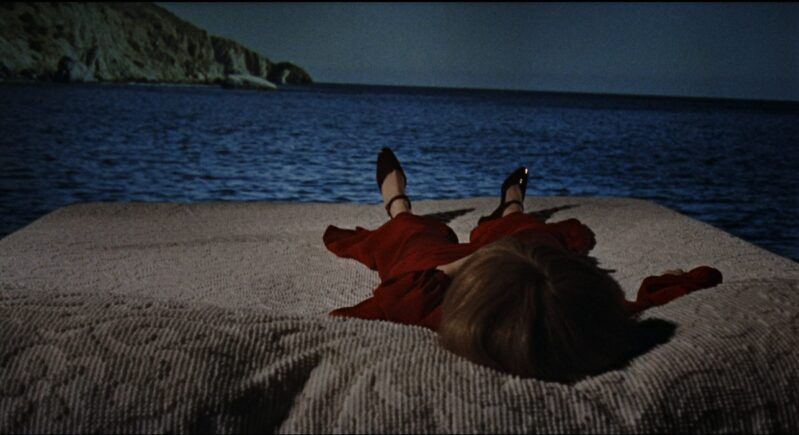
Cults and occultism is clearly an important theme of Rosemary’s Baby. But you could argue those elements are sub-themes of a much larger theme in the film: Catholicism and the complexity of faith. Witches and Satan worshippers run amok in Rosemary’s Baby, and collectively they serve as the antithesis to Rosemary’s Catholic upbringing and the pressures she faces from her family, from the entire denomination. Characters like Minnie and Roman are more than spell-casters—they symbolically represent the overwhelming stress that results from years of religious strain.
Reading the Ira Levin novel, which the movie is faithfully based upon, really helped me realize just how intense the pressure Rosemary faces is. Rosemary was raised Catholic and was expected to stay at home, marry a nice Catholic boy, and have lots of babies—just like her sisters did. But instead, Rosemary was shamed when she moved away to New York, married a movie star to live an extravagant lifestyle, and failed to have any children. And while she loves Guy and resents her family for their shaming tactics, she also cannot escape the natural guilt that comes from years of Catholic teaching. Part of the pressure to have children is she’s supposed to have children.
And the Castevets offer a less than ideal opening for that path. This is the movie’s symbolic way of saying to Rosemary, “Oh, so you want to have children so badly? But you don’t want to raise them in a traditionally Catholic way? Then you’re going to birth a demon child.” The movie isn’t moralizing, isn’t saying what Rosemary should or shouldn’t do. Rosemary’s Baby is simply visually capturing the pressure Rosemary faces as a woman who wants to have children and build her family.
Throughout Rosemary’s Baby, there’s a deliberate juxtaposition of Catholic imagery and satanic elements, amplifying the movie’s sense of horror and sacrilege. Catholic imagery often symbolizes purity, sanctity, traditional moral values, representing a familiar and revered aspect of religious belief for many (including Rosemary). Satanic elements, on the other hand, symbolize blasphemy, evil, the perversion of holy symbols and rituals. This juxtaposition highlights the psychological turmoil experienced by Rosemary. Her Catholic background makes the encroachment of satanic rituals and symbols into her life all the more terrifying and blasphemous. It amplifies her internal conflict and moral dilemma, as she navigates the horrifying realization of the satanic conspiracy that she’s entangled in.
Important motifs in Rosemary’s Baby
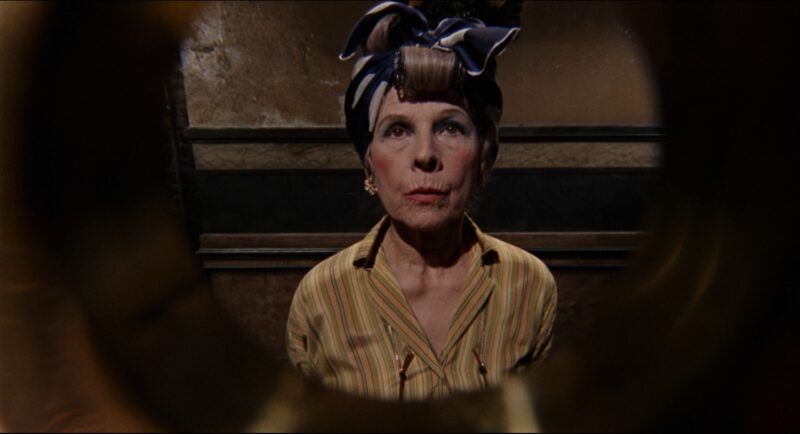
Yellow
Many people are curious about the overwhelming use of yellow throughout Rosemary’s Baby, as the color is used prominently for both setting and wardrobe. Personally, I find yellow to be a striking counter to the film’s underlying Satanic energy, almost fooling the viewer (as well as Rosemary) into believing that no trouble is afoot. But the further and further we sink into the conspiracy, the more and more the color yellow seems ill-placed. As the plot unfolds and Rosemary experiences anxiety and suspicion, the persistent yellow seems to juxtapose her internal turmoil, almost mocking the optimism and normalcy it is usually associated with.
New York City
New York City is featured prominently throughout the film. Particularly, aerial views of the city bookend the film. Sandwiched between those shots is a story about a woman who is desperate to break from from traditional Catholic pressures. Rosemary has been shamed by her Catholic family for moving to the city with her egotistical husband, so each and every day in New York serves as a reminder of her guilt. At home in her humble small town, things were safe and God kept watch. But in the city, darkness lurks within the mundane. The environment seems to be a character itself, reflecting the mystery, isolation, and unease experienced by Rosemary.
Questions & answers about Rosemary’s Baby
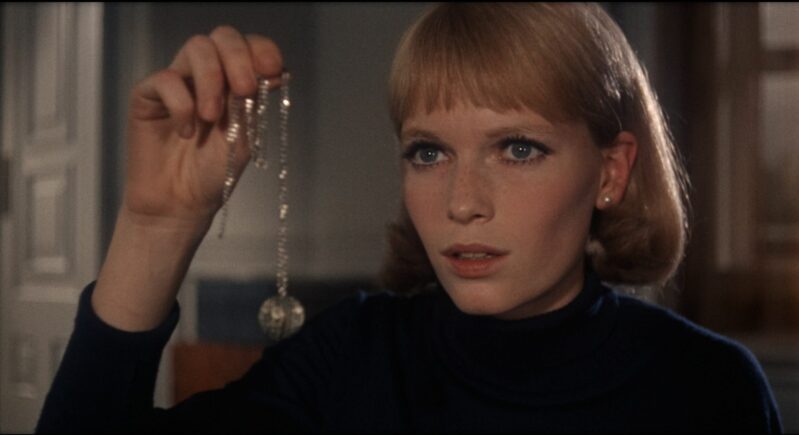
What was in the charm in Rosemary’s Baby?
In Rosemary’s Baby, the charm that is given to Rosemary by the Castevets contains a substance referred to as “tannis root.” Minnie gives Rosemary the charm as a necklace, insisting that it brings good luck. The tannis root inside the charm emits a strange, foul odor, and it is a mysterious and fictitious herb concocted for the narrative of the movie. Really, it’s nothing more than witchcraft. In general, herbs and natural remedies serve as a powerful motif in Rosemary’s Baby, acting as tools of deception and control while also symbolizing the perversion of nurturing and healing elements for sinister ends. Rather than serving as a source of healing or wellbeing, the herbs and concoctions administered to Rosemary facilitate her subjugation.
What is up with the dream sequence with the nun?
The dream sequence where a nun spouts nonsense might seem odd within the context of the movie Rosemary’s Baby. But this scene is much more comfortable in the book Rosemary’s Baby, where author Ira Levin offers more details. Essentially, the dream serves as a chance to explore Rosemary’s troubled past in the Catholic church and the guilt she feels by forgoing a traditional Catholic lifestyle.
Here’s how the dream sequence plays out in the Levin’s novel:
Soon he was asleep, but Rosemary lay awake beside him, seeing Terry’s pulped face and her one eye watching the sky. After a while, though, she was at Our Lady. Sister Agnes was shaking her fist at her, ousting her from leadership of the second-floor monitors. “Sometimes I wonder how come you’re the leader of anything!” she said. A bump on the other side of the wall woke Rosemary, and Mrs. Castevet said, “And please don’t tell me what Laura-Louise said because I’m not interested!” Rosemary turned over and burrowed into her pillow.
Sister Agnes was furious. Her piggy-eyes were squeezed to slits and her nostrils were bubbling the way they always did at such moments. Thanks to Rosemary it had been necessary to brick up all the windows, and now Our Lady had been taken out of the beautiful-school competition being run by the World-Herald. “If you’d listened to me, we wouldn’t have had to do it!” Sister Agnes cried in a hoarse midwestern bray. “We’d have been all set to go now instead of starting all over from scratch!” Uncle Mike tried to hush her. He was the principal of Our Lady, which was connected by passageways to his body shop in South Omaha. “I told you not to tell her anything in advance,” Sister Agnes continued lower, piggy-eyes glinting hatefully at Rosemary. “I told you she wouldn’t be open-minded. Time enough later to let her in on it.” (Rosemary had told Sister Veronica about the windows being bricked up and Sister Veronica had withdrawn the school from the competition; otherwise no one would have noticed and they would have won. It had been right to tell, though, Sister Agnes notwithstanding. A Catholic school shouldn’t win by trickery.) “Anybody! Anybody!” Sister Agnes said. “All she has to be is young, healthy, and not a virgin. She doesn’t have to be a no-good drug-addict whore out of the gutter. Didn’t I say that in the beginning? Anybody. As long as she’s young and healthy and not a virgin.” Which didn’t make sense at all, not even to Uncle Mike; so Rosemary turned over and it was Saturday afternoon, and she and Brian and Eddie and Jean were at the candy counter in the Orpheum, going in to see Gary Cooper and Patricia Neal in The Fountainhead, only it was live, not a movie.
Why is there so much yellow in Rosemary’s Baby?
As we discussed in the motif’s section, the use of yellow in Rosemary’s Baby is used to contrast the Satanic energy of the film, to highlight Rosemary’s naïveté, practically mocking the optimism and lightness that is normally associated with the color.
But there might be a deeper answer for the prominent use of yellow. Much like we saw in the movie Mother!, the yellow could symbolize sulfur, a substance that is biblically associated with hell. In Mother!, the yellow powder used throughout the movie by Mother serves as a metaphor for her dependence on external support or as a representation of human reliance on substances for coping or healing. While there might not be such a specific reason for the use of yellow in Rosemary’s Baby, you can see how the color would nod towards this biblical parallel.
Now it’s your turn
Have more unanswered questions about Rosemary’s Baby? Are there themes or motifs we missed? Is there more to explain about the ending? Please post your questions and thoughts in the comments section! We’ll do our best to address every one of them. If we like what you have to say, you could become part of our movie guide!

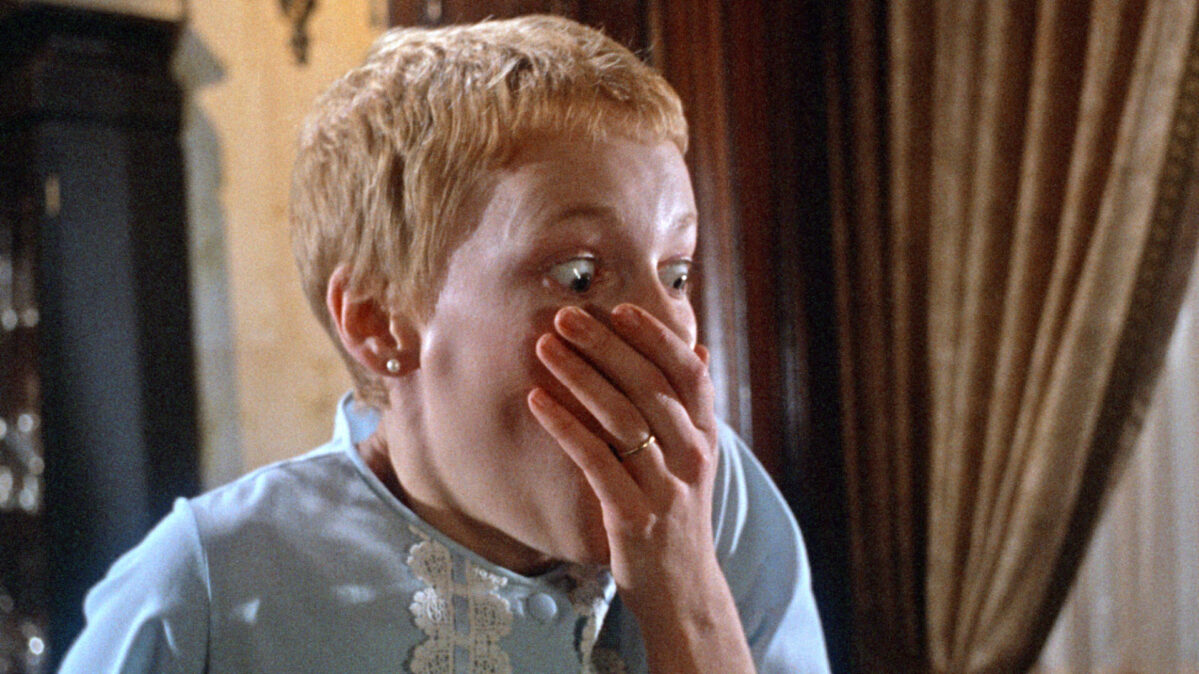
Thank you for the explanation, but I think that you only want force the anti-Catholic view. This movie is for real a denounce, a acclamation of real black witchery. But again, for you could understand it, you must be enough educated in the theme and more open mind. Two hints: yes the marks that disappear of the skin, the books for learn, yes there was a incumbus conception, yes the tea, the necklace, the animal spy, yes the secrecy and spy of relatives and covens that looks like normal people, yes the favor in ex-change for the life of the primogenitor of a virgin, the specific dates for the baby conception and born, all that is real. And the more real is that there is not only one anti-Christ, but several across history, some of them don’t look even strong or dangerous, not even sexy or influents… in that radicate the real danger. People don’t believe in nothing, them the cannot protect themselves.
Another detail: Polaski gave his own name to the husband, and describe why his beautiful and virginal actress wife die in hands of Mason… precisely when he wasn’t at home to protect her or the primogenitors baby. Rare how the little man always is protected from the police and became a successful director. This is a kind of pay tribute the the evil… Like Diddy Combs, Tony Mottola, etc. did in the past, Jennifer Lopez CD 66, etc.
I’ve always wondered about the purpose of part of the dream about the Kennedys–it relates to nothing (unless it’s more Catholic symbolism, as we recall the controversy of the first Catholic president, just a few years before the book/film. Is that part in the book?)
Ive always though that dream sequence is perhaps the most realistic dream in any movie: it rambles through unrelated details (like the Kennedys) before circling through the more blatant symbolism & actual drugged memory of the conception. Usually movie dreams are more blatantly plot-related.